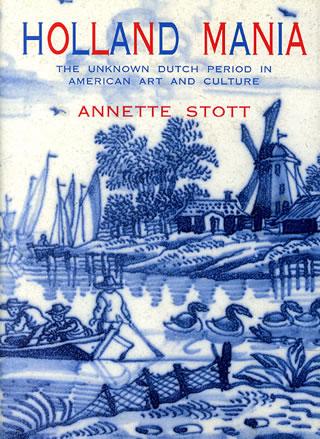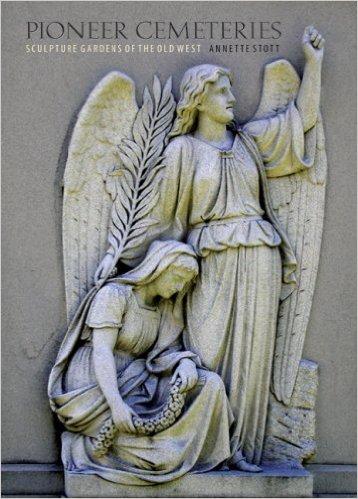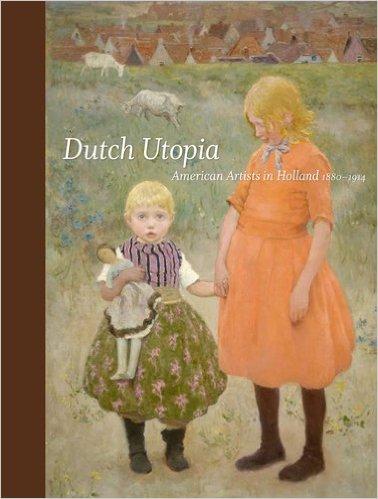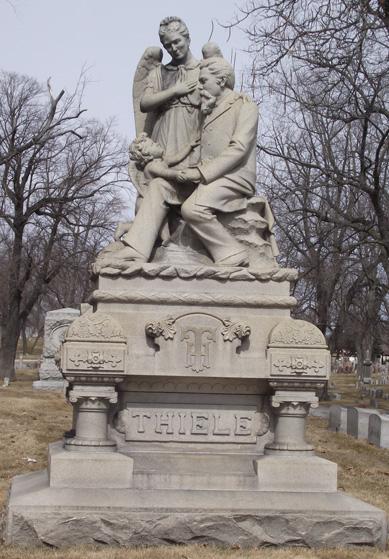-
Books
-
Holland Mania, Overlook Press, 1998

Holland Mania describes a curious era in American cultural history. During this period, 1880-1920, old Dutch master paintings and Dutch antiques moved into American collections in unprecedented numbers. American artists occupied six art colonies in the Netherlands, sending hundreds of pictures back to the United States for exhibition and sale. Historians revised their understanding of colonial history to account for a much larger Dutch influence in the formation of American institutions and ideals, even going so far as to designate the Netherlands, "the Mother of America." Tourists traveled to this new motherland to see where the exiled Pilgrims lived before embarking for America on the Mayflower and to visit scenes of seventeenth-century Dutch history. The love of Dutch culture and its association with American history affected architecture, interior design, advertising, children's literature, social entertainments, and even, briefly, women's fashion. This book traces the Dutch influence in turn-of-the-century American culture and offers explanations for the mania that developed for all things Dutch. It is illustrated with 100 black and white, and 49 color illustrations.
-
Pioneer Cemeteries, U of Nebraska Press, 2008

Annette Stott traces the story of a developing monument industry in the Rocky Mountain west (both local and imported), from the unkempt “boot hills” of the early mining camps and cattle settlements to the more refined “fair mounts.” She shows how people from Asia, Europe, and the Americas contributed to the visual character of the mountain cemeteries, and how the sepulchral garden functioned as an open-air gallery of public sculpture, at once a site for relaxation, learning, and social ritual. Here, widespread participation in a variety of ceremonies brought mountain communities together with a frequency almost unimaginable today. Illustrated with eighty-three striking photographs, this book shows how the pioneer cemetery emerged as a site of public sculpture and cultural transmission in which each carved or molded monument played dual (and sometimes conflicting) public and private roles, recording the community’s history and values while memorializing individuals and events.
-
Co-Edited Volume, Brill Academic Press, 2008

This volume investigates the place of Dutch history and Dutch-derived culture in America over the last four centuries. It considers how the Dutch have fared in America, and it explores how American conceptions of Dutchness have developed, from Henry Hudson's historic voyage to Manhattan in 1609 through the rise of Dutch design at the turn of the twenty-first century. Essays probe a rich array of topics: Dutch themes in American arts and letters; the place of Dutch paintings in American collections; shifting American interests in Dutch art, literature, and architecture; the experience of Dutch immigrants in America; and the Dutch Reformed Church in America.
-
Dutch Utopia, Editor, Telfair, 2009

Dutch Utopia is the first major exhibition to explore the little-known but fascinating phenomenon of American artists settling or working in Holland around the turn of the twentieth century and to consider the cultural significance of their production. These artists created visions of Dutch society that celebrated a preindustrial lifestyle and, in some cases, alluded to America's own colonial Dutch heritage. The exhibition includes seventy-three works by artists who remain celebrated today, such as Robert Henri, William Merritt Chase, John Henry Twachtman, and John Singer Sargent, along with painters admired in their own time but less well known now, including George Hitchcock, Gari Melchers, George Boughton, Elizabeth Nourse, and Walter MacEwen.
Annette Stott, chief curatorial advisor for the "Dutch Utopia" project and editor of the exhibition catalog has written extensively about the connections between Dutch and American art of the nineteenth century.
-
Current Project
-
Monuments to Faith

This book project examines the huge diversity of grave markers and monuments erected by American Christians to express their hopes and faith at the point of death. I hope to cover a broad geographic region and at least two centuries of history in the U.S. I am indebted to the Faculty Research Fund of the University of Denver for initial research on two chapters.
-
Select Chapters and Articles
-
“Personhood and Agency: A Theoretical Approach to Gravemarkers in Mainstream American Cemeteries,” Markers XXXV (2019): 46-81.
“A Material Response to Spiritual Crisis: Alexander Ross’s Anglo-Israelist Monument of 1898-99.” Journal of the American Academy of Religion.
87:1 (March 2019): 225-259. Digital pre-release, 20 October 2018: https://doi.org/10.1093/jaarel/lfy024
“The Thiele Family Monument: Vision of a Heavenly Future.” Panorama 3.1 (summer 2017)
“Marcia Oakes Woodbury and Religious Identity in Moeder en Dochter: Het Geheele Leven.” Archives of American Art Journal 56:1 (Spring 2017): 27-41.
“Collecting Old Dutch Masters: Originals, Interpretations, Copies and Reproductions.” In Holland’s Golden Age in America: Collecting the Art of Rembrandt, Vermeer and Hals. Esmee Quodbach, editor. New York: Frick Collection & University Park: Penn State University Press, 2014.
“Images of Dutchness in the United States,” and “Dutch-American Material Culture.” In Four Centuries of Dutch-American Relations, 1609-2009, edited by Hans Krabbendam, Cornelis A. van Minnen, and Giles Scott-Smith, 238-249 and 386-397. Albany, NY: State University of New York Press, 2009.
“Inventing Memory: Picturing New Netherland in the Nineteenth Century.” In Revisiting New Netherland, ed. Joyce Goodfriend, 13-39. Atlantic World Series, series eds Wim Klooster & Ben Schmidt. Leiden: Brill Academic Press, 2005.
“Neurasthenia and the New Woman: Thomas Eakins’ Portrait of Amelia Van Buren.” In In Sickness and in Health: Disease as Metaphor in Art and Popular Wisdom, ed. Laurinda S. Dixon, 125-143. Wilmington: University of Delaware Press, 2004.
“The Woodmen of the World Monument Program.” Markers XX (2003):1-29.
“Transformative Triptychs in Multicultural America.” The Art Journal 57 (Spring 1998): 55-63.
"Pioneer Women and Prairie Madonnas: Images of Emigrant Women in the Art of the Old West." Prospects 21 (1996): 299-325.
“The Holland Society and the Arts.” De Halve Maen 69 (Summer 1996): 25-32.
"Amerikaanse Kunstenaars." In Katwijk in de Schilderkunst, 110-120. Katwijk, North Holland: Katwijks Museum & Genootschap Oud Katwijk, 1995.
"Floral Femininity, a Pictorial Definition." American Art 6 (Spring 1992): 60-77.
"The Holland Years." In Gari Melchers: A Retrospective Exhibition, ed. Diane Lesko, 55-74. St. Petersburg, Florida: Museum of Fine Arts, 1990.
"Dutch Utopia: Paintings by Antimodern American Artists of the Nineteenth Century." Smithsonian Studies in American Art 3 (Spring 1989): 47-61.
"Letta Crapo Smith (1862-1921)" and "Myron Barlow (1873-1937)” and "Gari Melchers (1860-1932)" Three chapters in Artists of Michigan from the Nineteenth Century, ed. J. Gray Sweeney, 95-105, 110-113, 132-147. Muskegon, MI: Muskegon Museum of Art, 1987.
